You’ve heard of the beautiful views, amazing food, or wonderfully friendly people in Southeast Asia. You’ve probably also heard that you can find all of these things while maintaining a cheap shoestring budget that you can’t otherwise do in many parts of the world.
Table of Contents
ToggleIt’s true, and now you’re thinking of where to go in this vast region. Each place has its own unique charm. It would be nice to see it all, but there’s never enough time and money.
We’ll be going over my personal route that I took with a recommended budget and time to spend, my personal spending in each country and category, and go over the general atmosphere and reasons to visit each country.
You can then decide for yourself how you’d like to allocate your precious time and hard earned money and use a few suggested routes to have a better idea of Southeast Asia.
Best Southeast Asia Backpacking Destinations
Thailand
The Poster Child
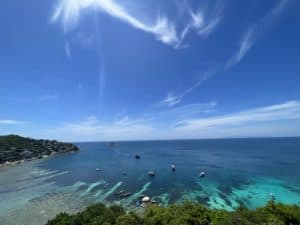
Thailand has it all. There’s a reason why it’s one of the most visited countries in the world.
The country is known as “the land of smiles”, has world renowned food, beautiful scenery whether you like the mountains or beaches, and is a great starting point for Southeast Asia.
Bangkok’s Suvarnabhumi Airport (BKK) is one of the highest traffic airports in the region, making it easier to find cheap deals into the region compared to other airports.
It’s also been known as a starting point for Southeast Asia travel for quite some time, making it a great point to join other travelers on the same path. You’ll also get excited hearing stories from those finishing their journeys.
Laos
Untold Beauty of Street Roosters and Beerlao

Laos is looked over by many traveling through the region and is almost never traveled to by itself. However, it’s a fantastic country that shouldn’t be skipped. If you’re traveling between Thailand and Vietnam, you can easily add Laos to your itinerary. If you’re looking for fellow backpackers, Laos’s tourists have the highest percentage of backpackers out of all the SEA countries since regular tourists going to one country don’t pick Laos.
Laotians are very laid back people making it a relaxing visit. The kids are extremely friendly all over and will always be excited to wave and say hello. The country wouldn’t be complete without its own beloved BeerLao that everyone drinks after work while having fun with karaoke and the vast amount of roosters roaming the streets no matter where you are.
Laos was definitely my favorite place to travel through on my journey and I can’t recommend it enough.
Vietnam
Exciting Chaos
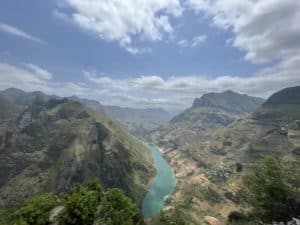
Moving from Laos to Vietnam on my trip was the biggest culture shock I had on my whole journey. Laos is very laid back. As soon as we made it past the border crossing and got into a town, I immediately felt the atmosphere change.
Vietnam is an exciting, high energy country. The buildings are all lined up together like townhouses with numerous shop signs calling out to you in different colors. The beeping of scooters and cars down the road never stops.
The country has a one party communist style government, but the people are the most capitalist in the Southeast Asia region, always trying to sell something.
There’s never a dull moment in Vietnam.
Cambodia
Stronghearted people
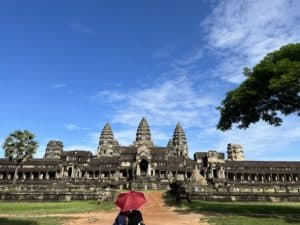
Cambodian people are the main reason to visit Cambodia. Sure, the most common reason to visit is to see the old temples in the area of Angkor Wat, and there are nice beaches and mountain treks you can do, but the people are what make Cambodia a special place.
They’ve gone through many tragedies quite recently, yet they are cheerful and optimistic for the future. It’s also quite sad to see how big the wealth inequality gap is in the country. Sure, in every country, there will be some high rollers, concentrated more in the big cities, but Phnom Penh is quite a unique place to experience.
It’s the Capital of the country, but on the same street that has tuk tuk drivers making $5 a day, there will be multiple Rolls Royces and other high end cars rolling down the street like they’re just your regular C class Mercedes in the West.
Angkor Wat is really a beautiful site of human achievement. It’s definitely worth a visit if you have time and are doing a full loop. With that said, don’t forget to explore the countryside!
Malaysia
Diversity Trifecta
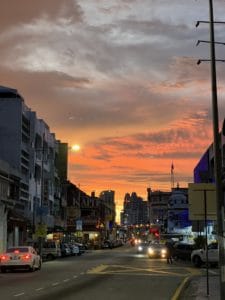
Malaysia, a very diverse country due to its history of Chinese and Indians being brought into the country. With the country’s population split into thirds ethnically, there’s a lot of different cultures within the country. The food is amazing, with local restaurants hosting Malay food, Indian food, Chinese food, and some Malaysian specialty fusion foods between the cultures.
There’s also many great places to visit. Georgetown, on Penang Island, is known for its historic district of old buildings, beautiful street art, and of course, amazing food.
The Cameron Highlands has much cooler weather, making it a great getaway from the heat for both domestic and foreign tourists. It also hosts Malaysia’s biggest Tea Plantations with many hikes to explore the jungle on the hills.
If you’re a big city person, Kuala Lumpur is an impressive capital. It hosts one of the best public transportation systems in Southeast Asia and has many modern amenities.
Singapore
Business Capital
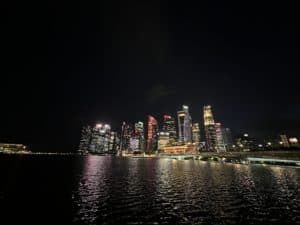
Singapore is Expensive. It’s a business hub of Asia and a small country made for business. It does host many beautiful tourist attractions however, and is definitely worth visiting for about 2 days if you have a flight in or out of the Changi Airport in Singapore.
Sure everyone knows about the Marina Bay Sounds, the Merilion, and the Crazy Rich Asians type of wealth, but my favorite thing in the country was visiting the Botanical Garden.
Taiwan
Southeast Asian Friendliness hidden in East Asia
Taiwan is an underrated destination. It doesn’t get many tourists, especially compared to the rest of Southeast Asia, but it has the perfect blend of East Asian culture with Japanese and Chinese Influence, but still has the tropical climate, scooter, and outgoing friendly people like Southeast Asia!
It’s also almost as affordable as Southeast Asia! The accommodation is what will be much more expensive, but the food and transportation is quite on par with the more expensive areas of Southeast Asia such as Southern Thailand and Malaysia.
The East of Taiwan has been one of the most scenic places I’ve been.
You don’t even have to go far off the beaten path to see the beauty. Cruising down the highway on the Southeast, you’ll be elevated way above the sea, with the beautiful mountains on the other side. If you time it right, you’ll have hitched a ride in a Suzuki Jimny, cruising down this mystical road into the Sunset, nodding your head to some reggae.
Taiwan is separated by mountains, with many countryside scenic activities on the East side, and great cities to explore on the West side.
Taiwan isn’t in Southeast Asia, but the country should not be looked over when planning your itinerary! My flight from Singapore to Taipei cost about $120USD and brought me to a whole new world.
Indonesia
Breathtaking Scenery, world class surf, wonderful people.
I’ve been to Indonesia!” You’ll hear this a lot traveling around Southeast Asia, but most people have only gone to Bali. Bali has been a known destination for decades now, and has gone from a surfer’s paradise to a commercialized and crowded party destination.
Don’t let opinions sway you from your instinct, and everyone should experience a place for themselves, but just know that Indonesia is made up of thousands of Islands with beauty everywhere.
If you surf, you can’t miss Indonesia. If you love exploring beautiful scenic nature, do yourself a favor and make Indonesia a priority.
Myanmar
Currently under political turmoil, with a military government in place at the moment. It’s not a common destination for the past decade because of this reason, but it is still on many people’s bucket list.
Myanmar is known to host some of the most extravagant temples in the Southeast Asia region.
If you’re adventurous, an experienced traveler, and you want to go off the beaten path, Myanmar may be a suitable destination.
From the few people that I’ve spoken to who have visited the past few years, it seems safe if you stay in the main cities and follow the rules, but for now I wouldn’t recommend visiting unless you are certain you must visit Myanmar.
Philippines
A country of Islands known for great Karaoke singers. If Islands are your thing, Philippines is your destination.
Food and accommodation will be similar to the rest of Southeast Asia, but the transportation between the islands will quickly eat into your budget.
If you want to explore the beautiful waters through diving and possibly surfing, the Philippines are an excellent option. Filipinos are not only very welcoming people, they are also very proficient in English, making it easier to communicate with locals compared to neighboring countries.
Sri Lanka
South Asia’s beautiful Island
If you love the tropical feel of Southeast Asia, but want to experience South Asia, Sri Lanka is a great destination. Sri Lanka hosts one of the coolest flags, yet it isn’t as recognized easily by the average person.
This doesn’t mean that it isn’t touristy however, since it has made a name for itself amongst surfers. Hidden gems of surfing spots in the past have had a trend to quickly develop into a tourist and expat hub such as Costa Rica and Bali, Indonesia. Sri Lanka isn’t on that level yet, which makes it a perfect place to go on a surf trip and enjoy the South Asian culture, including the cuisine.
If you’re flying to Southeast Asia from the European area of the world, Sri Lanka could easily fit on your entry or exit into the Southeast Asia region.
Southeast Asia Travel Tips
Have a basic plan, but you don’t have to stick to it
One of my favorite quotes is from a USA president, Eisenhower. “In preparing for battle I have always found that plans are useless, but planning is indispensable.” This is the perfect mindset for planning your travels.
Book Accommodation last minute
A general direction is good to have, but in Southeast Asia, it’s very easy to show up to a new town with no booking and quickly find one online. For most of my travels in Southeast Asia, I would go on the booking platforms Agoda, Booking, and Hostelworld and sort by lowest price and book it usually the day before. Sometimes on the day of, and sometimes a few days in advance.
Find like-minded Travelers
When you’re going on a trip for 2 weeks, a few dollars doesn’t mean too much. You saved up for a great vacation, and you’re going to spend your money to have a great time. When you’re budget backpacking to travel, it’s a bit different. You want to see as much as you can with what your pockets can dish out.
I kept telling people “I have a lot of time, but not a lot of money”. Some would instantly agree and we’d end up traveling together. It’s not hard to find like minded travelers, but it’s more common to find someone in between.
Get recommendations in person
Once you start, people constantly talk about where they’ve been and what they recommend. When I was entering Laos, I genuinely only knew about the slowboat from the Thai border down to Luang Prabang and nothing else. I just winged it as I went and had the best time exploring Laos and went on a path less common, but still common enough. It also made the country much more exciting not knowing where to go next.
However, opinions are like butts. Everyone has one, and most of them stink. It’s good to hear from others and makes an easy way to talk to others and make new friends, but if you think you’ll like somewhere, don’t turn back because someone else didn’t. If you’re booking last minute, you can easily leave early if you don’t like a place or stay longer if you like it.
Don’t Overthink; Go with the Flow
I’m a massive overthinker in general, but once I’m in the travel zone, it’s better to throw overthinking out the window. A surfer doesn’t fight the ocean. They learn to find the wave they want to ride and to take the ride the ocean gives.
Don’t be so frugal that you miss out on great experiences
If you’re on a shoestring budget, you’ll want to cheap out. It’s fine to cheap out on accommodation, and usually the cheap street food is amazing and local. If there’s something that seems interesting, just do it. It’s better to spend a little budget and cut your trip shorter, enjoying it rather than going for an extra few months just eating and sleeping.
The first few months, just walking around is enough and it’s easy to be frugal, but after a few months, it’s easy for things to feel repetitive, and it’s better that you’ve done something unique when the opportunity arises.
Southeast Asia Backpacking Map
My Personal Route: I went through the 3-4 month loop that I recommend as an itinerary and route later in this article. I spent more time in locations that I enjoyed due to the flexibility of long term travel, and then I also visited Taiwan before flying to my last destination
Backpacking Southeast Asia Routes
Best season to travel Southeast Asia
For the northern half of Southeast Asia, the months of November through February are optimal to travel as it’s neither the rainy season nor the smoky season. The weather is cool enough to where you won’t be sweating within 10 minutes of being outside, but it will still be beach weather. From February to April, the weather will start to get hot, and the dreaded “smoky season” or “burning season” will start. Here is an article for more information on the burning season in Southeast Asia.
Southeast Asia weather can be split into two main areas. The Northern half of Thailand, Laos, Vietnam, and Cambodia, and the Southern half of Thailand and countries below such as Malaysia, Singapore, Indonesia.
From May until October, depending on the area, it will be the rainy season. This isn’t the end of the world, but you just have to schedule around the rain.
For the Northern Half, the best weather will be between November and February.
It will be cooler, but it doesn’t get “cold” in Southeast Asia like it would in places further from the Equator. For example, even in the most Northern large city of Vietnam, Hanoi, it doesn’t snow.
How long should I Travel in Southeast Asia?
The more time the merrier. Backpacking through Southeast Asia is a journey that will come with many new experiences. If you try to rush it, everything will pass too quickly and you’ll miss the true gems. 3-4 months is the sweet spot to enjoying the backpacker traveling lifestyle without rushing things.
If you want to visit just one country, I would allocate at least 3 weeks. If you’re looking to go on a loop around the region such as Thailand, Laos, Vietnam, Cambodia, I would recommend allocating at least 3 months. If you have more time, you can add in more countries such as Malaysia and Indonesia if you want to continue budget traveling over land.
If a certain country like the Philippines is on your bucket list, you’ll have to modify your itinerary to fit the flights in.
Whether you want to explore the region over land and are open to any experiences that come your way, or already have destinations in mind that you must visit with limited time, this guide will give you a basic idea of each city you may want to visit.
3 months on a Backpacking Budget
3 months is a sweet spot on both budget and time to explore the region and get a taste of the environment.
The best way to do 3 months on a backpacking budget is to find the cheapest flight into the region, which will usually be Bangkok Thailand, Singapore / Kuala Lumpur Malaysia, or a major city in Vietnam such as Hanoi, Ho Chi Minh City / Saigon, or Da Nang.
From there, you can keep your costs low and the adventure high by traveling only land based for the duration of your travels. If you start in Thailand or Vietnam, a very common path for a 3 month benchmark is to travel a full circle through Thailand, Laos, Vietnam, and Cambodia.
If you have a desire to visit Malaysia, or have a flight in or out from Kuala Lumpur or Singapore, you should travel through Malaysia and then complete the loop. I would recommend at least 2 weeks through Malaysia to not feel completely rushed.
The best way to travel long term is also to go in with no expectations and just explore what you like. With three months, you can go in with a game plan, but still have the flexibility to change plans as you go.
The base route I would recommend is one month in Thailand, 2 weeks in Laos, one month in Vietnam, and 2 weeks in Cambodia.
If you have 4-6 months, you can throw in Malaysia and some Island countries such as Indonesia or the Philippines.
Southeast Asia Backpacking Cities, Route, and Transportation Guide
Thailand: Bangkok, Chiang Mai, Pai, Chiang Rai.
Laos: Huay Xai, Luang Prabang, Vang Vieng, Nong Khiaw, Muang Ngoi, Muang Khong.
Vietnam: Dien Bien Phu, Sapa, Hoa Binh, Hanoi, Ha Giang, Ha Long Bay, Cat Ba Island, Ninh Binh, Hue, Da Nang, Hoi An, Nha Trang, Da Lat, Saigon / Ho Chi Minh City.
Cambodia: Phnom Penh, Siem Reap, Koh Rong.
Thailand: Bangkok, Koh Tao, Koh Phangan, Koh Samui, Surat Thani, Koh Chang, Phuket, Koh Phi Phi, Krabi Town, Ao Nang, Tonsai / Railay, Koh Lanta, Hat Yai
Malaysia: Langkawi, Penang / Georgetown, Kuala Terengganu, Ipoh, Cameron Highlands, Kuala Lumpur, Malacca, Johor Batur.
Singapore.
Bangkok, Thailand
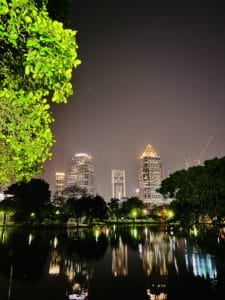
The basic route I would recommend for a three month backpacking adventure starting in Bangkok, Thailand is to stay in Bangkok for a few days, and then head north. If it’s your first time traveling long term as a backpacker, especially solo, I would recommend sticking to the beaten path where it will be easy to meet others.
Bangkok is a big busy city that’s pretty polarizing in opinions. People seem to either love it or hate it. There’s a lot to do, but the most common place for backpackers to start is to head to Khao San area, meet some people and explore for a few days, party at night, and then move on to Chiang Mai.
If you enjoyed Bangkok, you can spend more time when you return after going full circle. Even if you love it, I would advise moving on in your journey if you’ll be returning doing a full circle trip.
How to get from Bangkok To Chiang Mai
You can take a bus or train from Bangkok straight to Chiang Mai Thailand. A common way is to take a sleeper bus or sleeper train, which will set you back around 700-1000 Thai Baht (~$20-30usd).
If you want a full guide with all the best options, here’s the 4 best ways to get from Bangkok to Chiang Mai.
If you book a flight at least 2 weeks in advance, you can normally find a budget flight for around 1000tbh (~$30usd).
It will be much quicker taking a flight, but you will have to have under 7kg of luggage or risk getting fined if you want to stay on the lowest budget. Many people will also mention that you save on a night’s accommodation when taking a sleeper transportation option, but if you’re truly going on the cheapest budget without hitchhiking and camping, you can still find hostels in Chiang Mai Thailand for less than 100baht ($3usd).
Chiang Mai, Thailand
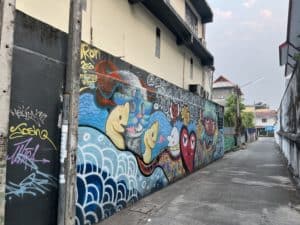
Once in Chiang Mai, your options open up. Chiang Mai is the biggest city in the North of Thailand, but it still feels “homey” with the lack of high rises in the city center, and suburbs that spread forever before reaching many popular waterfalls and mountain hikes.
Chiang Mai is also one of the best places in Southeast Asia to find street food and live music. If you walk around, it’s impossible to miss it.
Pai, Thailand
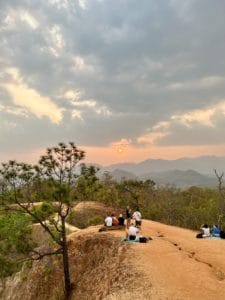
From Chiang Mai, you can take an optional detour to Pai, a popular hippie destination amongst western travelers. If you want a countryside small town feel while still being on the beaten path of tourism, Pai is the place to go in Thailand. Many people end up getting stuck in “the Pai hole” where they go for a few days, and end up staying for weeks or more.
Pai is also quite well known for the small town relaxed atmosphere. If you want to escape the city and meet some interesting people, Pai is a must. Some regard it as a tourist trap, while many others call Pai their favorite place from their travels. It is definitely a tourist town, but a relaxed one.
How to get from Chiang Mai to Pai
If you want to visit Pai, you’ll have to take the notorious 3-4 hour van ride through one of the most twisty roads in the world. Imagine the tail of the dragon for 2 hours, but with drivers who don’t respect the rules of the road.
If you’re brave enough, you can rent a scooter to travel between Chiang Mai and Pai. However, this is a dangerous option for even experienced riders as the road is notorious for transportation vans passing over solid lines in blind corners.
Chiang Rai, Thailand
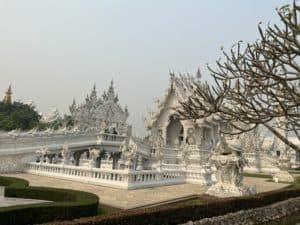
After Chiang Mai, whether you visit Pai and return or not, the next destination is Chaing Rai. Chiang Rai is a smaller city in Northern Thailand, with the main attractions being the unique structures.
The White Temple has made its way through social media and has become a bucket list item to see as it’s a stunning modern temple built by a local artist, while still carrying a resemblance of Thai temple architecture.
To learn more about Chiang Rai, you can read the Chiang Rai Thailand Guide.
The atmosphere of Chiang Rai is definitely very different from Chiang Mai or Pai, with a more family atmosphere. You’re not going to find as much adventure with other backpackers, but it’s still a nice place to explore, but I would allocate more time to other places in the North when creating a basic plan.
How to get from Chiang Mai to Chiang Rai
The most common way to get from Chiang Mai to Chiang Rai is by taking a bus ride. For more information, here is a detailed guide for the bus from Chiang Mai to Chiang Rai.
Huay Xai, Laos
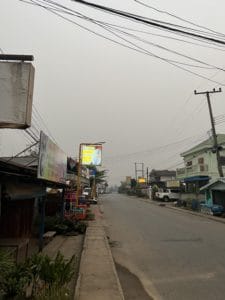
Entry to Laos. The border town in the North, where you can take a van ride or boat ride to Luang Prabang, the old Capital of Laos.
The town has two main streets that you can walk down and explore. There are a few guesthouses and hostels, some restaurants for food, liquor stores, and a bunch of corner stores for food supplies.
It’s a fun town that gives you a great introduction to Laos. A very relaxed country with a lot of dirt streets, happy kids saying hi all the time, happy people in general, BeerLaos, roosters roaming everywhere, no big chain convenience stores, and actual bread!
How to get from Chiang Rai to Huay Xai
To get from Chiang Rai to Huay Xai, you will take a bus from the main bus station in Chiang Rai, heading to Chiang Khong. You can either stop in Chiang Khong, the border town on the Thai side, or pay extra to go to the border directly.
Once you get to the border, you have to pay a fee to take a bus to cross, and then get offered tuk tuk rides from the border to Huay Xai. For more details on the bus times and cost, here is the Chiang Rai to Thai border article.
Pakbeng, Laos
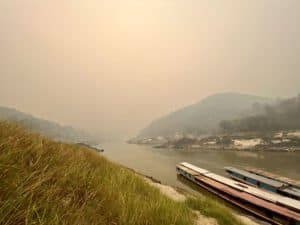
If you’re taking the two day slow boat journey from Huay Xai to Luang Prabang, you will stop for a night in Pakbeng.
Don’t worry about booking accommodation in advance if you take the slow boat ride. There will be a hoard of salespeople trying to fill rooms for the night who will give you pictures and prices and offer a ride from the docks to their guesthouses.
After making the stop and getting accommodation, you’ll have a bit of time to walk around with daylight and look for dinner. Pakbeng is a small village with its economy completely driven by the slowboat stops. It has enough guesthouse options, a few restaurants, a few convenience stores, and one bar that everyone goes to at night.
Luang Prabang, Laos

Luang Prabang, the old capital of Laos, and probably the most beautiful and relaxed city in Laos. It’s definitely still touristy, but very relaxed for a big city, especially compared to Thailand or Vietnam.
That is unless you get the pleasure of visiting during “Pi Mai”, also known as Songkron in Thailand, which is their New Year. Pi Mai takes place mid April and is a multi day event, supposedly 3 days, but people will get excited even before and after.
The most famous part of Luang Prabang for tourists is the Kuang Si Waterfall, which is a scooter ride outside of the city, but is known as one of the most spectacular waterfalls in the whole region.
There isn’t too much to do in Luang Prabang in terms of backpacking tourist activities, and the scooter rentals are definitely much more expensive than in Thailand, but can still be found for under $10usd a day.
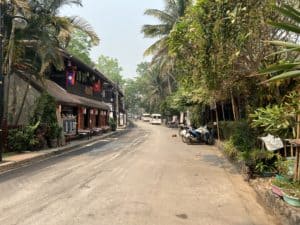
It makes the perfect rest spot after the infamous 2 day slow boat ride. You’ll have definitely made some new friends on the boat ride, and from there you can enjoy the main nightlife activity in Luang Prabang, bowling.
Almost everywhere else closes before midnight in Luang Prabang, but the bowling alley keeps going with drinks, and many fun activities such as bowling, archery, and table tennis.
Huay Xai to Luang Prabang
You can take a long and uncomfortable bus or van ride from Huay Xai to Luang Prabang, but the more popular option is an even longer, but much more enjoyable slow boat ride down the Mekong delta.
The boat ride takes off from the Port in Huay Xai between 9am-11am, finishes the first night in Pakbeng before dark, and then continues the next day with finishing in Luang Prabang.
The slow boat ride as of 2023 cost 400,000 LAK (Laotian Kip), but is always changing due to currency inflation. It stays around $25usd.
Vang Vieng, Laos
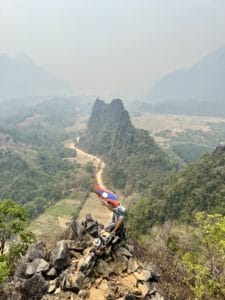
Vang Vieng, my personal favorite town in Laos, and one of my favorite times in my whole 7 1/2 month backpacking journey.
The closest to it is Pai, Thailand, but the atmosphere is definitely different. In this town, you’re not getting the local experience, definitely the tourist feel. It’s a small town, with two main streets, many hostels and guesthouses, restaurants, bars, and activities.
During the daytime, you can go hiking up mountains for beautiful views, cool off in the many lagoons in the area, float down the river for hours at the “tipsy tubing” event, relax at the night markets and great cheap restaurants, chat at the relaxed bars, and have late night fun at the nightclubs.
For a full guide on everything, you can read the Vang Vieng Laos Guide.
I was planning on visiting for 3 nights and ended up staying for over a week. The beauty of long term travel as a backpacker is that you can quickly leave a place you don’t like and stay longer in the places that really intrigue you.
Luang Prabang to Vang Vieng
Transportation in Laos is definitely not the most luxurious. You can get between Luang Prabang and Vang Vieng with either the train, or a van ride. The van ride is notoriously bumpy, much more time consuming, but a little cheaper than the train.
The train system was funded by China and has very high quality trains and train stations. I was surprised that they x-ray and checked your luggage. My jaw actually dropped when I walked into the bathroom at the Luang Prabang Train Station. It was like a nice hotel lobby bathroom.
For more details on how to get to Vang Vieng, you can read How to get to Vang Vieng.
Vientiane, Laos
Nong Khiaw, Laos
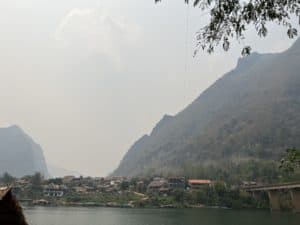
Most western tourists visiting Laos go to Luang Prabang, Vang Vieng and sometimes Vientiane.
Nong Khiaw is a small tourist town known for its beautiful scenery. It’s surrounded by hikable mountains and in the valley with a river dividing it.
If you’re heading to Northern Vietnam after Laos, I would highly recommend taking the route of visiting Nong Khiaw and making your way up the river towards Northern Vietnam.
Go for an early morning hike to catch sunrise. You won’t regret it.
How to get to Nong Khiaw
If you went to Vang Vieng or Vientiane, you can take a van ride or the train back to Luang Prabang. From Luang Prabang, you have to take a van ride for a few hours to get to Nong Khiaw.
It’s a nice scenic ride, and the road conditions are definitely much better than between Luang Prabang and Vang Vieng.
You can book van rides in Laos from local travel agencies or hostels. It’s hard to miss.
Muang Ngoi, Laos
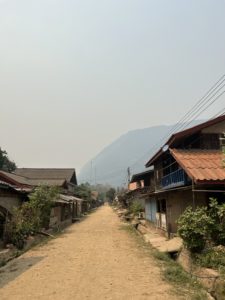
The first stop on the boat ride from Nong Khiaw. Muang Ngoi became a popular place to visit in the past because it was a one street village only accessible by boat, with no electricity or motorized vehicles.
Over the past decade, Muang Ngoi has gained access to electricity, and had a road connecting it to the rest of Laos, allowing motorized vehicles to enter. It’s still a very relaxed village with fun hikes, swimming, kayaking. The dirt road with stray dogs and chickens roaming the street add to the village feel.
It has however become quite touristy with better developed restaurants and guesthouses all down the street. It doesn’t feel as authentic as it may have been 20 years ago, but it is still a great visit.
How to get to Muang Ngoi
You can take a boat from Nong Khiaw to Muang Ngoi in about an hour. Tickets can be bought at the main pier near the bridge in Nong Khiaw.
It’s definitely an adventure as the journey takes about an hour in a boat so narrow that you will be touching knees with the two benches facing each other for seating.
On my ride, the engine stalled three times, and a local hopped in the back and had to blow into the carburetor and squeeze the fuel lines because the engine was running too rich.
Muang Khua, Laos
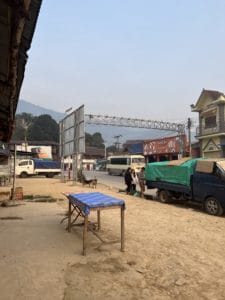
Muang Khua is the “border town” of Northern Laos.
It’s a pretty long drive from the border to Vietnam, but it’s the final rest stop where you’ll have to show up to the main street at 6:30am and wait for a magical van to appear out of nowhere and hop in to get dropped off in Dien Bien Phu, Vietnam.
There isn’t much to do here. There’s three restaurant choices in town, a few places to stock up on snacks, and a few guesthouses and hotels to stay at. I will mention that The cheapest hotel room I’ve had has been in Muang Khua, costing me $3 usd or 50k LAK for a queen bed hotel room with a private bathroom, air conditioning, and even toiletries.
Muang Ngoi to Muang Khua
This ride is an adventure. If you go to Muang Ngoi, I would recommend asking people on the boat if they are going to Muang Khua next if you are traveling solo.
The sign at the docks says that the boat between Muang Ngoi and Muang Khua runs every day, however, they require at least 6 people who want to go to Muang Khua from Nong Khiaw or Muang Ngoi.
If there are 3 people, they can call a private boat that is pretty much a long Canoe with a motor, but it will cost more.
You then take the boat for about an hour to a dam, get transferred to a tuk tuk to cross the dam, get transferred to a bigger boat that makes its way to Muang Khua, while making stops for locals going to their villages.
This ride is definitely a local experience. If you’re really adventurous, you could try to hop off at a local village and make friends there. It definitely won’t have any guesthouses, hostels, or restaurants, so you would have to ask locals on the boat ride.
After a few hours, you’ll arrive in Muang Khua.
Dien Bien Phu, Vietnam
Dien Bien Phu is a great introduction into Vietnam. Especially if you’re transitioning from Laos. The culture shock will hit hard, but at least it won’t be as overwhelming as going straight to Hanoi or Saigon.
Dien Bien is the Northwestern Province of Vietnam with the closest big town to the northern border of Laos being Dien Bien Phu.
Dien Bien Phu is a nice place to stay for a few nights if you enjoy history and want to learn about battles in Dien Bien Phu being a pivotal moment for Vietnam’s independence.
How to get from Laos to Vietnam
The northernmost border between Laos and Vietnam can be crossed by taking a mystical van ride from Muang Khua, Laos to Dien Bien Phu, Vietnam. There’s no tickets, no reservation, no signs. You can ask around, but all you’ll here is that you walk to this street early in the morning, said to depart between 6:30-7:30am, and hope that a van will show up.
When I made my mystical van journey, I woke up extra early and left my hotel at 6am. I waited and waited, and thought I might have missed the Van ride or it was just a myth. At around 6:45am, a van passed by. I thought I missed it. Well, it kept going and finally stopped, turned around, and then parked.
It was quite a pleasant ride. At first, it was just me and another backpacker I met that morning. Then, one stop after another, the van quickly filled up. We got to the border, had to throw all of our passports together, and wait.
It was very evident that the border officers would quickly take the Vietnamese passports, and Laos passports. The two non ASEAN passports were skipped over and over until our bus driver came over and asked for them to check ours since everyone else was checked and we had to go. If we tried to cross the border on our own, we would have probably been there all day.
You cross into Vietnam and get introduced down a mountain road with beautiful rice fields. Eventually, you get to towns and instantly feel the different atmosphere from Laos. It’s busy. Even in small towns. Finally, you’ll get dropped off at the bus station in Dien Bien Phu.
Sapa, Vietnam
Sapa is a well known mountain town in Northern Vietnam. It’s home to some beautiful mountain treks, the longest Gondola ride in the region, as well as the tallest mountain in the region. The town itself is beautiful, but has been described by some as feeling too put together like a Las Vegas style.
If you enjoy nature, I wouldn’t skip it. Northern Vietnam is beautiful, and Sapa is a great example of it.
How to get to Sapa Vietnam
You can get a bus from Dien Bien Phu or Hanoi. If you’re coming from Laos, I would recommend visiting Dien Bien Phu, then go to Sapa, and then go to Hanoi.
Hoa Binh, Vietnam
Hoa Binh is probably the only “off the beaten path” location that I list on this guide. It’s not on the map to visit for foreign tourists, but I stumbled across it while hitchhiking from Dien Bien Phu to Hanoi.
It’s less than 2 hours out from Hanoi and is a nice little town with amazing street food and markets. If you want an escape from the big city feel of Hanoi but still have amenities, Hoa Binh is a nice getaway that is also not heavily touristy like most well known places in Vietnam.
Hanoi, Vietnam
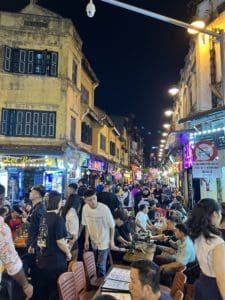
The capital of Vietnam and the 2nd biggest city. Many great places to explore and even more amazing foods to try. The main areas of the city are busy and will be like nowhere else you’ve been.
Hanoi also serves as the main hub to access the rest of the surrounding cities and towns in the north.
Ha Giang, Vietnam

You’ve heard about it, it’s true. Ha Giang is a must visit destination if you visit Vietnam. From speaking to locals, it only recently became a popular destination for foreign tourists to visit. Word got out with the help of social media that this province holds some breathtaking mountain roads.
The most common thing to do is to rent a motorcycle or join a tour group and make a multi-day trip just cruising around the beautiful mountains.
Ha Long Bay, Vietnam
Another famous location in Vietnam. Known for the UNESCO site of thousands of beautiful limestone islands, Ha Long Bay has been a popular destination to take a cruise ride. You can find anything from a transport ride to a luxury cruise ship.
Cat Ba Island, Vietnam
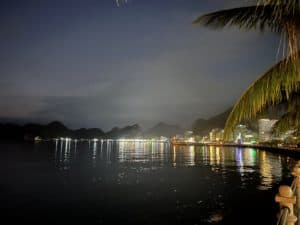
Cat Ba Island has gained popularity in recent years seen as an alternative to Ha Long Bay. Cat Ba hosts the Lan Ha Bay cruises that are very similar to the Ha Long Bay, but is cheaper as it is not a part of the UNESCO area.
You can take a cheap full day cruise around both Lan Ha Bay and Ha Long Bay from Cat Ba Island. Aside from the cruise, it’s a seafood getaway in the north of Vietnam with a large national park taking up a majority of the Island.
Ninh Binh, Vietnam
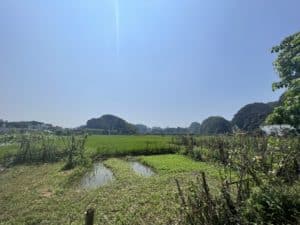
Ninh Binh is also known for limestone mountains, but on land instead of in the sea. Ninh Binh city itself is a regular town in Vietnam, but has amenities. Many tourists enjoy the Tam Coc area if you want to be catered to as a tourist and close to activities such as boat rides.
If you want to be in a less touristy street, you can stay in Trang An and still have great access to the area.
Hue, Vietnam
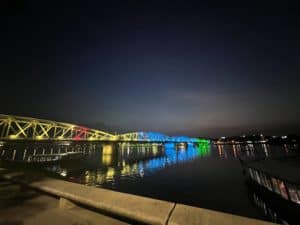
A chill city, known for its history and amazing food. Hue was the old capital for a short time during the Nguyen Dynasty. The city is split by a river, which includes a nice riverwalk at night. The Northside is the Citadel area where the old historic buildings are located.
South of the river is the regular part of the city that also includes the nightlife street. There’s also an abandoned water park outside of the city that is popular to explore, but my favorite thing about Hue was just walking through the local markets during the day and try the amazing foods, and relaxing by the river at night.
Da Nang, Vietnam
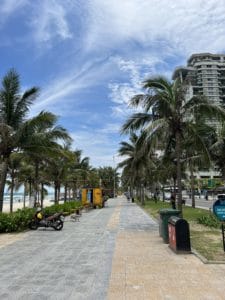
Da Nang is probably my favorite city in the world. It checks all my boxes in a perfect balance. I need to live by the beach, where there is surf. I don’t like big cities and Da Nang is a medium sized city with all the amenities, but you can still get a local feel. Lastly, I love Vietnam in general with the high energy lovely people.
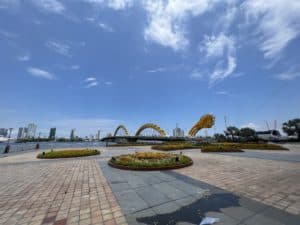
It’s also in a prime location with an international airport, close to the beach, mountains, Hoi An, the scenic Hai Van Pass, and in Central Vietnam which hosts many great foods such as Bun Bo Hue, Mi Quang, and Ban Xeo.
Hoi An, Vietnam
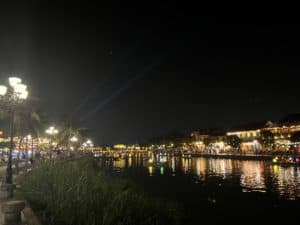
A picturesque preserved town with french architecture, a beach nearby, and spinning circular boats? Hoi An is a very picturesque town that you’ve probably seen somewhere in your travel research.
The famous foods of Cau Lau and Banh Mi’s from Hoi An make it a nice visit. I had a blast riding a motorbike around the surrounding countryside areas and finishing it off with a great meal. However, I found the main attraction of the riverwalk being too commercialized.
Sure, other towns that I enjoyed such as Pai, Thailand are very commercialized, but the energy of Hoi An definitely isn’t one for the “hippie backpacker”.
With Da Nang and Hoi An being so different and so close to each other, you can easily switch between them if you don’t like one or the other.
Nha Trang, Vietnam
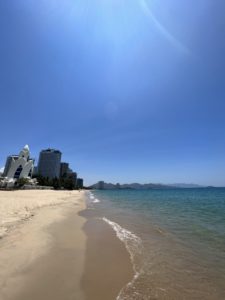
A beach resort town similar to Da Nang, but smaller and filled with Russians instead of Koreans. You can meet some fun people, but I wouldn’t say this town has a backpacker vibe.
Da Lat, Vietnam
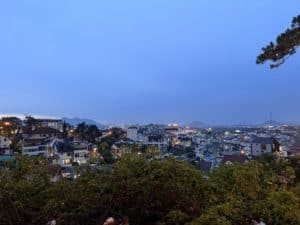
The chill zone of Southern Vietnam. It’s an elevated mountain town made for tourism. A great escape that many foreign and domestic tourists visit to escape the heat. Interesting maze of residential areas with beautiful areas to explore.
Mue Ne, Vietnam
Beach town known for its sand dunes. I guess if you want to go 4wheeling around on sand dunes, this is the place.
Saigon / Ho Chi Minh City, Vietnam
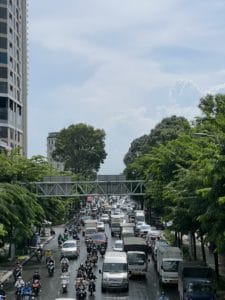
Vietnam’s biggest city and the old capital. Split up by numbered districts, this concrete jungle is always busy. If you like big cities, this is definitely a unique one with more motorbikes than people.
Phnom Penh, Cambodia
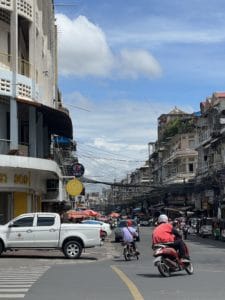
Seeing the wealth inequality in the Capital of Cambodia is something else. Some streets will have a fully developed business center with skyscrapers, and a few blocks down there will be street markets with canopy tents setup selling delicious foods.
On any street, you’ll see tuk-tuks happy to make $5 a day, while there are Rolls Royces driving down like they’re just Corvettes in the United States. (For non-Americans Corvettes are nice sports cars, but become generic and bland to the average American who sees one multiple times a day).
While you are in Cambodia, you should go to a museum. One of the famous ones in Phnom Penh is the Killing Fields that will tell the recent story of the tragedies in the country. It’s a country with great people despite the recent problems they faced. It definitely gives you some gratitude.
Siem Reap, Cambodia

The second biggest city in Cambodia, right under the Angkor Wat area. Get a 3 day pass for the Angkor Wat area, do a guided tour for the first day, and rent out a motorbike for a few days and explore around. Play some Echoes by Pink Floyd and walk around the beautiful temple ruins.
Koh Rong, Cambodia
If you want an Island escape in Cambodia, Koh Rong is now the popular place to go. I would personally wait for Thailand and if you want to explore more of Cambodia, visit the countryside. Accommodation may be harder to find, but you could stay in a city like Siem Riep and just motorbike around for a few hours.
Bangkok, Thailand
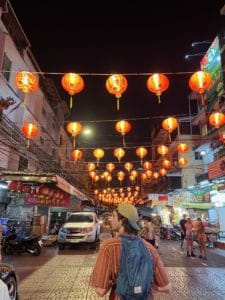
Oh, take me back to the start. Nobody said it was easy. If you enjoyed Bangkok the first time around, now you can really explore since you’ve gotten a better feel for your likes and dislikes. From Bangkok, you can either finish your journey if you’re out of time, or head South to keep it going.
Koh Tao, Thailand

The small, dive focused Island. Many people doing the loop consider Koh Tao as their favorite place of all their travels. It’s small with not much going on but relaxing.
If you are interested in trying Scuba Diving, or are an avid diver already, Koh Tao is an Island famous for diving. It’s also one of the cheapest places in the world to get your Open Water Divers Certificate which will allow you to go scuba diving down to 18m or 60ft in the future.
Koh Phangan, Thailand
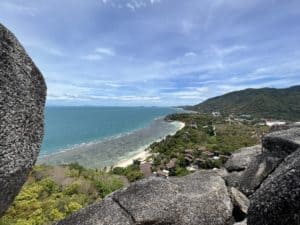
Known by many for the parties, especially the Full Moon Party. However, I found Koh Phangan to be my favorite Island, and I didn’t even party.
There’s many spectacular viewpoints, but for me, Koh Phangan is about the journey and not the destination. The roads going around the Island are a blast to cruise around on with a motorbike.
They have curves, up and downs, and some spectacular views. I rented a motorbike on the Island for 3 days and all I did was cruise around the Island, checkout viewpoints, and eat good food.
Koh Samui, Thailand
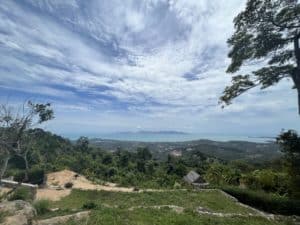
The most liveable Island out of the three. Koh Samui has multiple busy towns on the Island and a multitude of different places. There are expensive honeymoon style resorts, and some really local neighborhoods.
Koh Phangan has a strong Island vibe. Koh Samui is still an Island, but starts to feel a better balance between the very hippy like Koh Phangan and an actual city on the mainland. The roads aren’t as enjoyable as Koh Phangan, but more practical. There’s an actual highway that loops around the Island making commutes easier.
If you want an adventure, the middle of the Island has some hills with nice views, and some fun dirt roads for some offroading. Local foods and street food are more plentiful on the bigger Island as well.
Krabi Town, Thailand
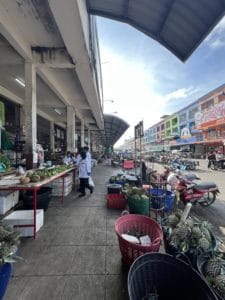
A known town that’s still a great escape from tourism. Krabi Town is the closest you’ll get to a regular town while visiting all these popular destinations.
Krabi Town is really the hub to get around the various tourist zones of the Krabi Province. However, Krabi Town itself is just the perfect breather if you’re on a long travel and need a bit of a break.
It’s covered in great local night markets with mostly locals and students going around. The morning market is full of fresh fruits, vegetables, meats, and even meals. Prices are local and fair, and you’ll probably be the only outsider there.
The town has many great local restaurants, a hostel called “Leisure Hostel”. Amazing owner, staff, and friendly vibes from guests as well. When you’re exploring around Krabi Province, do yourself a favor and stop by Leisure Hostel for a few nights and just relax in Krabi Town.
Ao Nang, Thailand
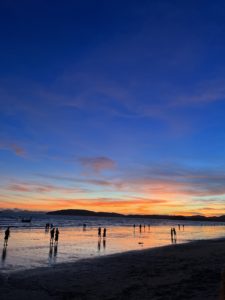
Beautiful beach, extremely touristy. Krabi province is worth visiting for the beautiful beaches, and Ao Nang is a great choice if you want to be accommodated with a beautiful tourist town. It goes around in a big U shape full of restaurants, travel agencies, and hostels and hotels.
Tonsai / Railay, Thailand
Rock climbers paradise. Tonsai and Railay are the alternative to Ao Nang. They’re much more relaxed environments that attract rock climbers. A small beach town accessible only by boat ferry rides makes it much less crowded.
Hat Yai, Thailand
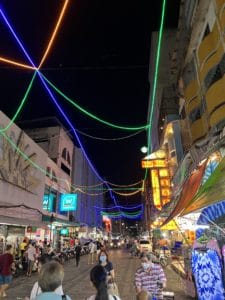
The largest city in the South of Thailand. Used as the border town to get between Thailand and Malaysia at the Padang Besar. It’s a city with not too much going on, but you can take a stop here, enjoy the night market, and make sure you burn anything that could get you in trouble when entering Malaysia.
Penang / Georgetown, Malaysia

Georgetown is a beautiful preserved town on the Island of Penang. It’s the perfect introduction to Malaysia. A beautiful historic town filled with the strong mix of Malay, Chinese, and Indian cultures. Chinese and Hindu temples all over, and amazing street food everywhere.
You can walk around for hours and not get bored in Georgetown. And if you want to explore further, there’s a cheap bus system to get to places such as hikes, and the botanical Garden of Penang.
Ipoh, Malaysia
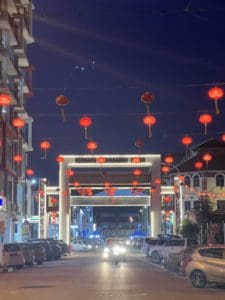
A pretty well known city in Malaysia, but not too touristy. Known for its food and white coffee, but not too much to do.
Cameron Highlands, Malaysia
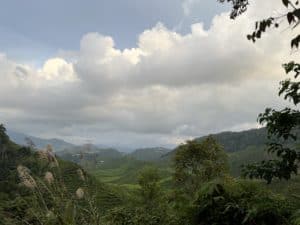
Chilly town in the mountains, similar to Da Lat, Vietnam, but on a smaller scale. Famous for the biggest tea plantations in Malaysia, the Cameron Highlands is a great place to go for hikes.
The main strip that most visitors will stay at is Tana Rata, which is just one street of a few restaurants, and then some back roads with apartments where locals live.
You’ll also meet many backpackers here, something you don’t find as much in Georgetown, which seems to attract a more mature audience of foreign tourists.
Wake up, find a group to go hiking with, finish the day at a fun bar, and you’ll be sure to have a good time. Just don’t get lost on the trails. It’s easier than it seems.
Kuala Lumpur, Malaysia
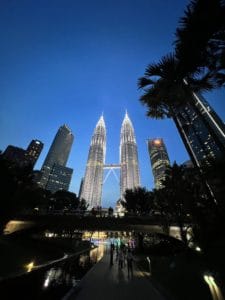
An impressive capital city. Kuala Lumpur is probably my favorite mega city in Southeast Asia. There’s a great metro system, great public transportation in general, and great organization in general.
There really aren’t too many exciting activities for the shoestring backpacker crowd, but it’s a very livable city that I respect. Of course being a big city, if there’s something that you need, Kuala Lumpur will have it. There’s a Chinatown, India Town, fruit markets, skyscrapers, shanty shacks, a few nice parks, and a lot of concrete.
Malacca, Malaysia
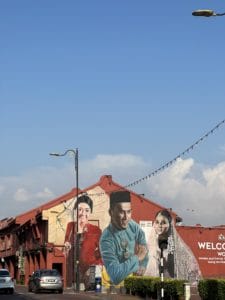
If you like history, maybe you’ll like Malacca. A trade port that’s been passed around between Malaysia, the Dutch, and other colonizers that came and went. It has a riverwalk area where most of the tourism is, and aside from that, it’s a pretty city.
It’s quite polarizing with opinions, and I’m one of the haters. It was probably my least favorite place I visited in my whole 7 ½ month backpacking journey, but there’s nothing wrong with it.
Malacca is probably a nice place to live, and I’m sure it’s appealing for Kuala Lumpur residents with a short weekend trip away, but not so appealing for the international backpacking tourist.
Johor Batur, Malaysia
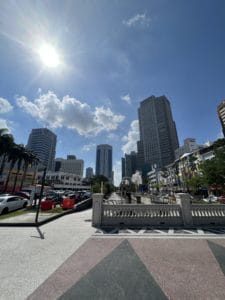
The North New Jersey of New York City… but actually good. Johor Batur is a big commuter city between Malaysia and Singapore.
Not much to do for tourists, but a very nice city to live in and stay in for a night.
Singapore

The business capital of Southeast Asia. Crazy Rich Asians. Yep, it’s rich and clean. If you’re flying in or out of the Changi Airport in Singapore, Staying in Singapore for 2 nights would suffice.
There’s a lot you can explore, but coming from Malaysia, it feels very similar but more expensive and with a higher ethnically Chinese population.
Sure, check out the Gardens by the Bay and the famous Merlion Fountain, but my favorite part was definitely the Botanical Garden. It’s accessible by bus or metro and it’s a spectacular one.
For budget backpackers beware, even the cheapest meal here will be exactly the same as in Malaysia, but at least 2-3x the cost.
Author
William @ Barefoot Surfer
I’m William, the writer behind Barefoot Surfer: a blog about honest, no-BS backpacking through Japan and Southeast Asia. I left behind the typical career path to backpack for 8 months. Currently living in Toyama, Japan. I've traveled on $500 a month. From hitchhiking across islands to sleeping in train stations, I share practical tips and personal stories for travelers who value freedom over comfort and truth over fluff.